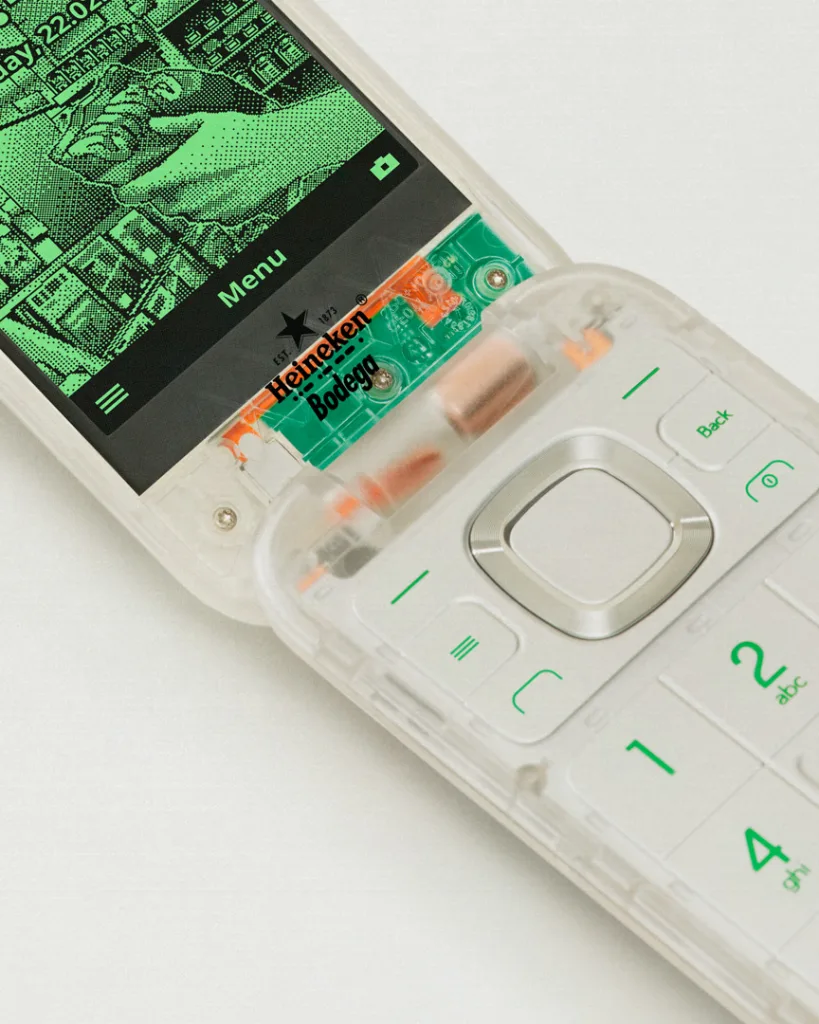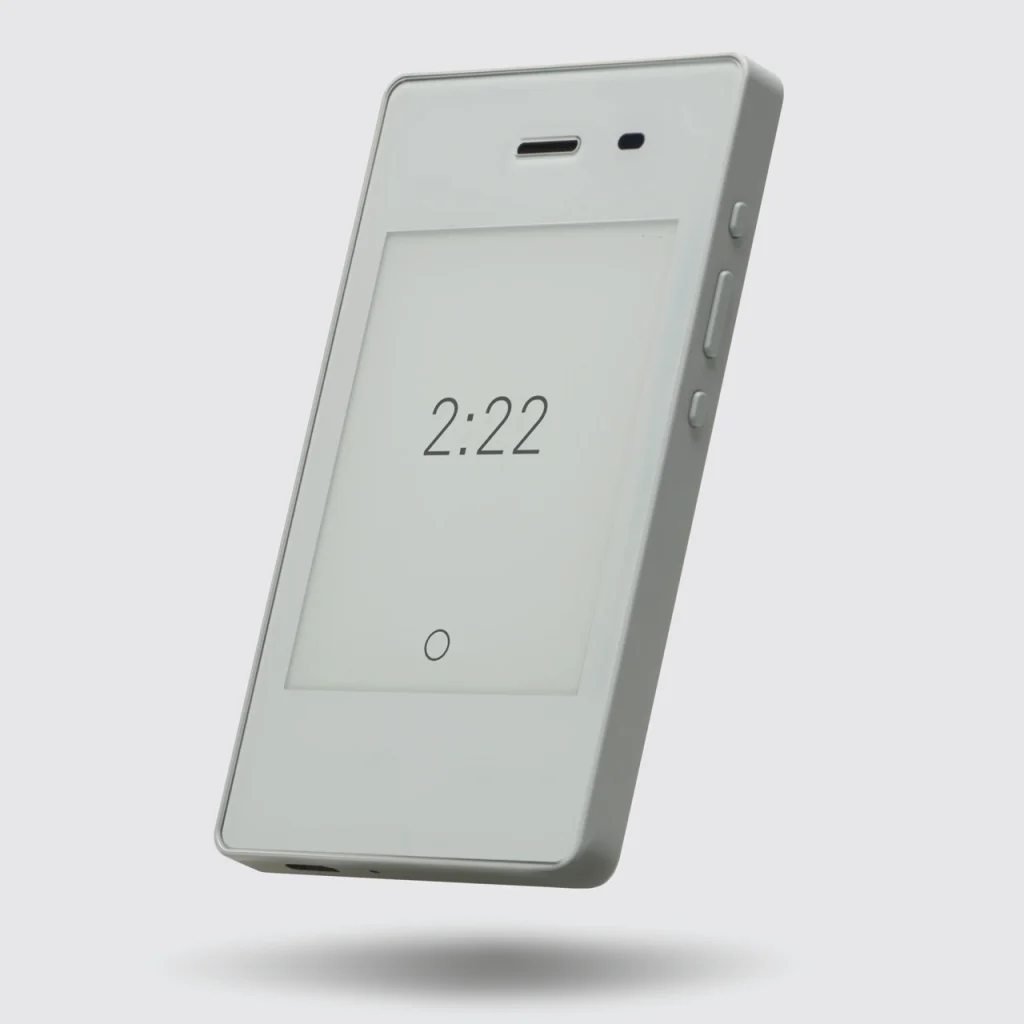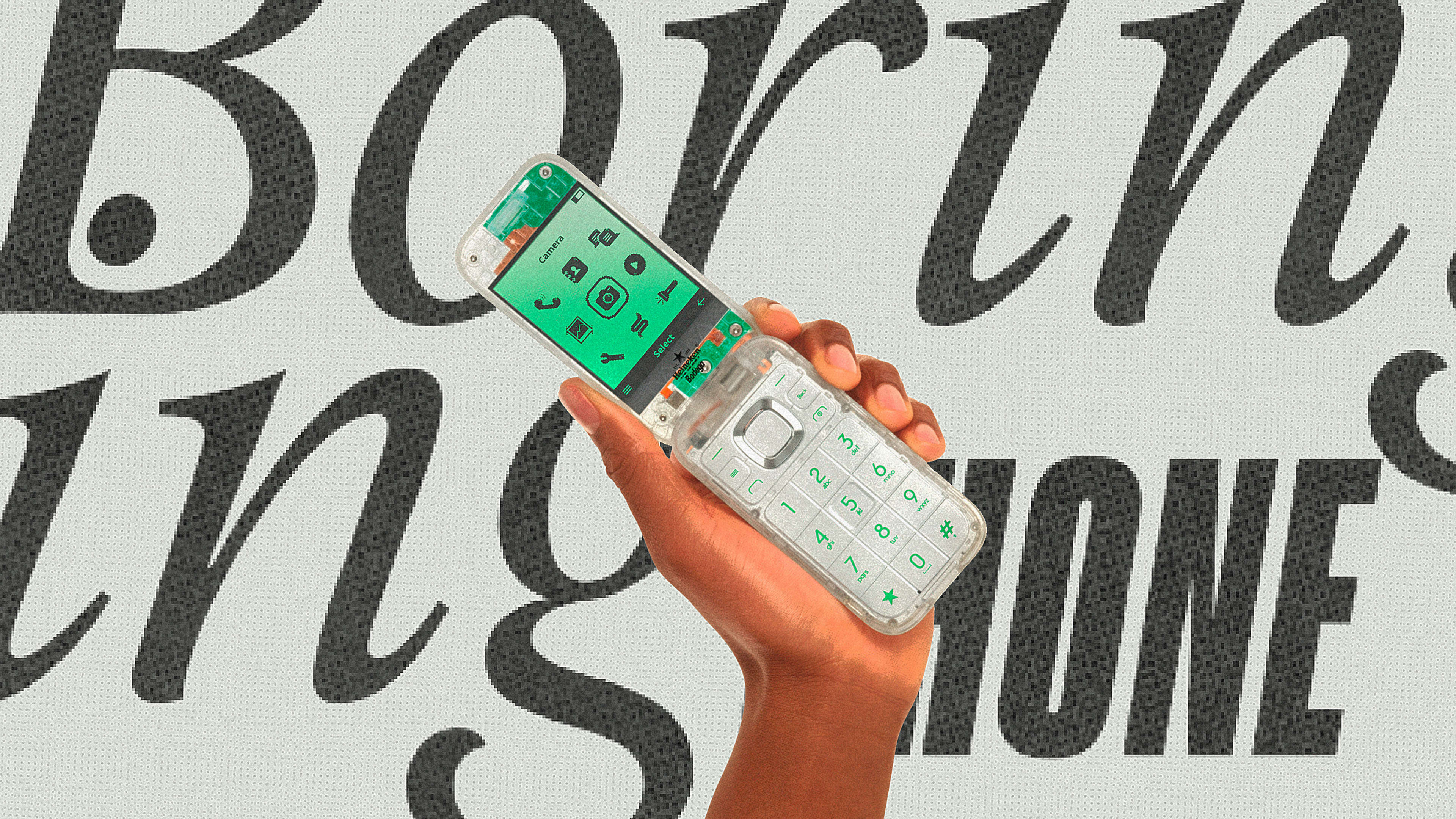Gen Z is sick of smartphones—and big brands are starting to catch on.
For the past several years, “dumbphones”—’90s-inspired phones with pared-back features—have gradually gained traction. Plenty of smaller manufacturers offer their own versions of dumbphones, and the trend has even recently inspired a subgenre on YouTube dedicated to helping viewers convert their smartphones into DIY dumbphones.
While cautious parents and technophiles have already caught on to dumbphones, it looks like the trend is now hitting the mainstream. In an unexpected collaboration revealed last week, beer brand Heineken and clothing store Bodega created the Boring Phone, a dumbphone “with no features, but with tons of swag.”

Designed for understimulation
The Boring Phone is an ode to Y2K aesthetics with its translucent outer hardware, flip screen, and green accents. According to Andrey Tyukavkin, executive creative director of LePub, the branding agency behind the campaign, the phone was designed to “deliver the basics for a great night out,” like texting and calling, without any of the distractions that come from a smartphone.

The Boring Phone is an exaggeration of a dumbphone you might actually buy. The phone has an email app that has no memory to receive actual emails. “Thus making space for your social life,” Tyukavkin says. Other apps are little tricks to get you back to socializing, like a taxi app that encourages users to talk to a bartender, or a version of the classic game Sanke that pushes people back to the party they are at. “Other features include a torch, calendar, FM radio, and alarm. Just a few years back this was all we needed for a night out, right?” Tyukavkin says.
These “apps” are really just conversation starters, and that’s fine. The Boring Phone doesn’t need to really work. Heineken and Bodega created only 5,000 units, and they’re planning to distribute them through competitions rather than making them available for sale.

The rise of the dumbphone
There are plenty of functional dumbphones on the market, and people seem to be buying them. In the past year, existing dumphone brands like Light Phone and dumbwireless have reported major spikes in demand, especially from younger buyers. HMD, the manufacturer behind Nokia, doubled its flip phone sales from 2022 to 2023, and is projecting greater returns this year. The reemergence of the dumbphone coincides with growing fears about the impact of social media on teens’ mental health, as well as a rising dependence on smartphones post-pandemic.

In a 2023 report, researchers from the nonprofit organization Common Sense found that the average teen receives around 237 notifications per day and spends about 4.5 hours on their smartphone. Respondents reported struggling to manage their own smartphone use, despite its negative impacts on sleep and focus. A notable group of interviewees mentioned trying to control the impulse to check their phones using features like “do not disturb” or silencing notifications.
Many critics have drawn connections between the ongoing youth mental health crisis and social media use, though the cause and effect isn’t always clear. Last October, 33 states levied a lawsuit against the tech conglomerate Meta, accusing the company of damaging young peoples’ mental health by purposefully designing features that keep them hooked to their apps.
Heineken and Bodega conducted their own research to find out how Zillennials (a combination of Gen Z and millennials) of legal drinking age in the U.S., U.K., Brazil, Germany, Mexico, and Italy engage with smartphones in social settings. Some 90% of survey respondents across the U.K. and U.S. admitted to doomscrolling while socializing. More than a third said they checked their phones more often than they should while socializing, and 38% said they would consider switching off their phone or leaving it at home in the future.
Tyukavkin believes Gen Zers are increasingly embracing the dumbphone movement because of their relationship with technology. “Gen Z doesn’t see tech the way other generations do,” he says. “The world in general is made to think that everything is constantly improving, and everyone needs to upgrade/catch up, but Gen Z have a better overview of technology—both old and new—to see what tech is actually doing for their life.”
Like all marketing endeavors, the Boring Phone is meant to serve as a direct reflection of current culture. What does this mean for the future of dumbphones? If the trend toward ’90s-era technology continues, Gen Z could wield enormous influence over how major technology giants think about the design of their phones. But marketing stunts are a double-edged sword. They signal both the arrival of a trend into the mainstream—and perhaps the beginning of its decline.
Recognize your brand’s excellence by applying to this year’s Brands That Matter Awards before the early-rate deadline, May 3.
